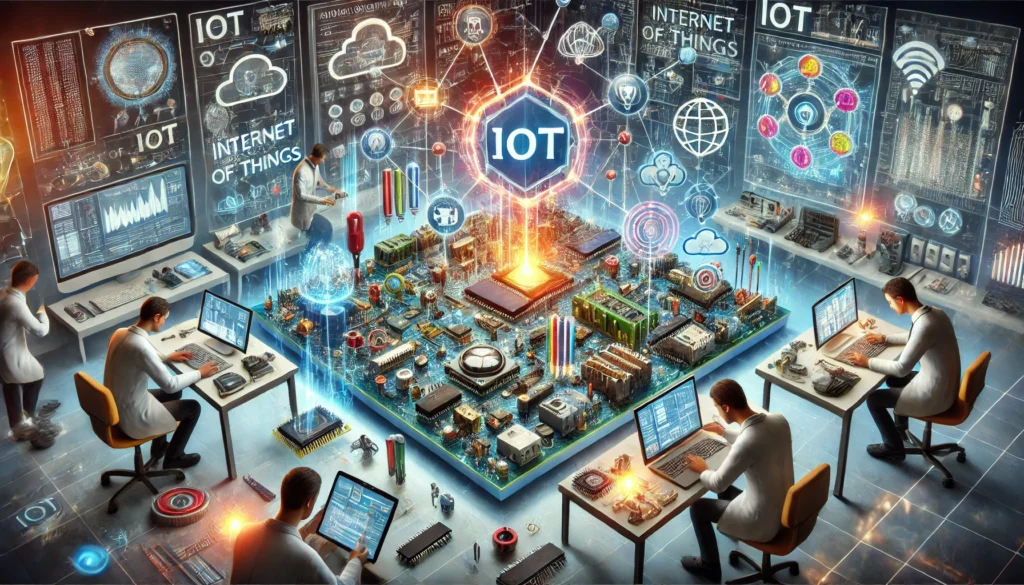
The integration of the Internet of Things (IoT) in modern electronics design has revolutionised how devices communicate, automate processes, and provide smarter solutions across various industries. From smart homes and wearables to industrial automation, IoT is enabling devices to become more interconnected and intelligent. However, while IoT opens new possibilities for innovation and efficiency, integrating this technology into modern electronics is not without its difficulties.
Designers face a range of challenges, from ensuring security and managing power consumption to dealing with complex connectivity and data management issues. The rapid growth of IoT has created significant pressure on electronics designers to overcome these obstacles while still delivering robust, scalable, and cost-effective solutions. This guide will explore the key challenges of integrating IoT into modern electronics and offer insights into how to address them effectively.
Understanding the Core Concepts of IoT
At its core, IoT is an ecosystem that connects devices to the internet, allowing them to collect, exchange, and act on data. These devices, or “things,” can range from simple sensors to complex machinery, and they work together to provide intelligent systems for various applications. The three primary components of an IoT system are:
- Sensors: Devices that collect data from the physical environment, such as temperature, motion, or pressure.
- Networks: The infrastructure (wired or wireless) that enables communication between devices and central systems.
- Processors: Embedded systems that analyse data and make decisions or trigger actions based on the information gathered.
These components form the foundation of IoT systems, allowing for seamless interaction between the digital and physical worlds.
The Role of IoT in Modern Electronics
IoT is revolutionising electronics by transforming traditional devices into smart systems capable of autonomous operation, real-time data analysis, and remote monitoring. Today, IoT-enabled devices are ubiquitous, ranging from wearable fitness trackers to smart appliances, industrial equipment, and even entire smart cities.
In consumer electronics, IoT is enabling innovations like smart homes, where devices such as thermostats, lights, and security systems are interconnected to create more efficient and automated environments. Similarly, wearable devices monitor health metrics and sync data to mobile apps, while industrial IoT applications enhance productivity and predictive maintenance in manufacturing processes.
As more industries adopt IoT, the demand for smart electronics continues to grow, making IoT a critical factor in modern electronics design.
Challenges in IoT Electronics Design
While IoT presents vast opportunities, integrating it into electronics design comes with its own set of challenges. These hurdles must be addressed to ensure the successful deployment of IoT-enabled devices.
Security and Privacy Risks
One of the most significant concerns in IoT is security. With so many connected devices sharing sensitive data, the risk of cyberattacks and data breaches increases. IoT devices often lack robust security measures, making them vulnerable to hacking.
Power Consumption and Battery Life
IoT devices, particularly those designed for remote or portable use, often face power management challenges. These devices need to perform complex tasks like data collection, processing, and communication while maintaining long battery life. Since many IoT devices are deployed in areas where replacing or recharging batteries frequently is not feasible, optimising power consumption becomes critical. Designers must select energy-efficient components and use low-power communication protocols to ensure that devices operate effectively without draining the battery. This challenge is even more significant in IoT applications that require continuous data collection and transmission, such as environmental monitoring systems, where power consumption needs to be carefully balanced with performance requirements.
Connectivity and Network Challenges
The diversity of IoT devices requires multiple connectivity options, from Wi-Fi and Bluetooth to cellular networks and low-power wide-area networks (LPWAN). Ensuring stable and reliable connectivity in varied environments is essential but challenging. Addressing these challenges requires careful planning and the selection of the most suitable wireless communication technologies for each specific IoT use case.
Data Management and Processing
From collection and storage to processing and analysis, IoT systems require robust data management strategies to handle the influx of information. One of the key challenges is ensuring real-time processing, especially for applications like autonomous vehicles or industrial automation, where latency could result in serious safety issues. Additionally, ensuring data privacy and compliance with regulations like GDPR adds further complexity. Designers must consider how to store and process data—either on the device, on a local server, or in the cloud—while balancing the need for quick access with security and privacy concerns.
Standardisation and Compatibility
As the IoT ecosystem grows, a lack of standardisation across devices and communication protocols can hinder the development of interoperable systems. With numerous manufacturers creating their own proprietary solutions, ensuring that IoT devices can communicate and function together seamlessly is a challenge. This fragmentation can create compatibility issues, leading to delays in integration or increased costs as designers attempt to bridge gaps between different systems. Standardisation efforts, such as adopting industry-wide protocols or developing universal platforms, are necessary to overcome these hurdles and ensure that devices from different manufacturers can work together in a unified system.
Firmware and Software Maintenance
Maintaining the software and firmware of IoT devices is critical to ensuring their long-term functionality and security. Unlike traditional electronics, IoT devices require regular updates to patch vulnerabilities, fix bugs, and add new features. However, managing these updates—especially for devices deployed in remote or hard-to-reach locations—can be complex. Over-the-air (OTA) updates provide a solution, allowing firmware updates to be delivered remotely, but this also introduces potential security risks if not implemented properly. Additionally, ensuring that devices remain functional during updates without causing downtime or disrupting services is a key challenge for IoT designers.
Latency and Real-Time Processing
Certain IoT applications, such as autonomous vehicles or medical devices, require real-time data processing with minimal latency. Any delays in data transmission or processing could have serious consequences, from malfunctioning systems to safety risks. Achieving low-latency communication requires optimising the entire IoT architecture, from sensor data collection to processing algorithms. This is particularly challenging in systems that involve multiple layers of communication or complex data processing. Designers need to ensure that data is processed and acted upon quickly, without delays, while also maintaining system reliability and accuracy in real-time scenarios.
Cost Constraints
Designing IoT devices with advanced features while keeping costs low is a challenge, especially when developing for consumer markets. The cost of integrating sensors, processors, and communication modules must be balanced with the overall product budget.
Environmental and Physical Constraints
IoT devices often need to operate in harsh environments, such as extreme temperatures or high humidity. For instance, IoT sensors used in agriculture must function reliably in outdoor conditions, while industrial IoT devices may need to operate in environments with heavy machinery and vibration. Designers must ensure that devices are robust enough to handle environmental stresses while maintaining functionality.
Best Practices for Integrating IoT in Modern Electronics Design
Successfully integrating IoT into electronics design requires careful planning and implementation. Below are some of the best practices to address the challenges mentioned above.
IoT Security Best Practices
To secure IoT devices, designers should implement secure boot processes, ensuring that only trusted software is executed. Data encryption is critical for protecting sensitive information during transmission, and secure communication protocols (such as TLS or SSL) should be used to safeguard interactions between devices. Additionally, hardware-level security, like tamper-resistant chips, helps protect devices from physical attacks.
Power Management
Power efficiency is a crucial factor in IoT design, especially for battery-powered devices. Designers should prioritise energy-efficient hardware components and optimise software algorithms to reduce power consumption. Implementing low-power wireless communication protocols such as Zigbee, Bluetooth Low Energy (BLE), or LPWAN helps prolong battery life.
Networking in IoT
The choice of network technology is critical for ensuring reliable communication in IoT systems. Low-power wide-area networks (LPWAN) are ideal for long-range, low-data-rate applications, while Wi-Fi and Bluetooth are suited for shorter-range devices with higher data needs. Selecting the right connectivity option depends on the application’s requirements for data throughput, range, and power consumption.
IoT and Data Management
Efficient data management is essential for handling the vast amounts of information generated by IoT devices. Cloud computing offers scalable storage solutions and processing power, enabling devices to offload heavy computations. To ensure privacy, designers must incorporate data encryption and comply with regulatory requirements like GDPR when handling sensitive information.
IoT Sensors and Their Integration in Modern Devices
The performance of an IoT system is heavily dependent on the sensors used. Choosing the right type of sensor for a specific application—whether it’s temperature, motion, or pressure—ensures accurate data collection. Proper integration of sensors into devices, including calibration and signal conditioning, is critical to optimise their performance.
Firmware in IoT Design
Firmware plays a critical role in the functionality and security of IoT devices. Developing secure and optimised firmware that supports over-the-air (OTA) updates ensures that devices can receive necessary security patches and performance improvements without physical intervention. Firmware updates also allow for the addition of new features post-deployment.
Prototyping and Testing IoT-Enabled Devices
Prototyping and testing are crucial steps in IoT device development. Designers should use simulation tools to prototype IoT devices and run tests that assess performance under various conditions. Additionally, certifications such as CE or FCC are vital to ensure that IoT devices comply with regulatory standards and can be safely deployed in target markets.
Conclusion
Integrating IoT into modern electronics design is not just a trend; it’s a pivotal step towards the future of technology. By adopting IoT technologies, designers can create more intelligent, responsive, and efficient devices that meet the growing demands of consumers and industries alike. As the IoT ecosystem continues to evolve, the potential for innovation is limitless, making it essential for electronics designers to stay ahead of the curve by embracing IoT integration strategies.
If you’re ready to innovate with IoT in your next project, explore how Zeus Design can help you create smart, connected devices that lead the market.

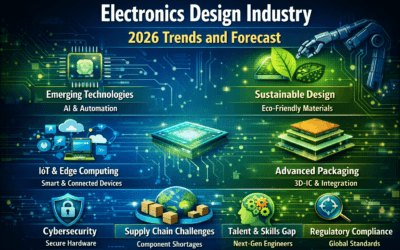
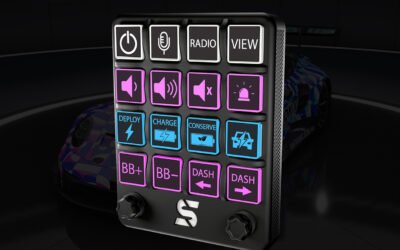
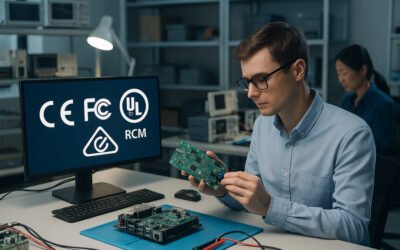
0 Comments